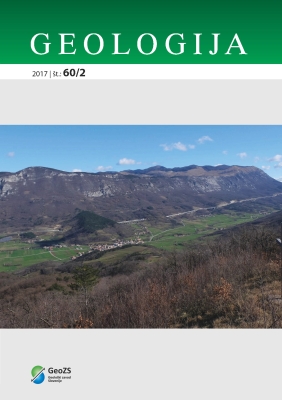Minerali z redkimi zemljami v sedimentih reke Drave (Slovenija) ter njihov potencialni izvor
DOI:
https://doi.org/10.5474/geologija.2017.018Povzetek
Minerala monazit in ksenotim sta pomemben vir redkih zemelj, itrija in aktinidov. Lahko ju uporabimo tudi kot orodje za radiometrično datiranje (geokronologijo), ter kot indikator geneze matične kamnine. V prispevku predstavljamo rezultate mikroanalize zrn monacita in ksenotima zaznanih v frakciji težkih peskov reke Drave. Cerijev monacit ima spremenljive vsebnosti Th, kar kaže na njegov hidrotermalni izvor ali izvor iz metamorfnih (od faciesa zelenega skrilavca do amfibolitnega faciesa) in magmatskih kamnin. Rezultati mikroanalize monacita kažejo izomorfno nadomeščanje s ceralitom (CaTh(PO4)2) in v manjši meri s huttonitom (ThSiO4), pri čemer tvorijo trdno raztopino. Kemijska sestava in stopnja izomorfnega nadomeščanja monacitnih zrn nakazujejo njihov izvor iz kamnin Eklogitnega pasu in masiva Granatspitz v Visokih Turah v Avstriji. V ksenotimu je najbolj zastopan element Y, ki ima v vseh zrnih enakomerne vsebnosti, medtem ko se vsebnosti težkih redkih zemelj (HREE) spreminjajo, kar kaže na izvor iz različnih geoloških okolij.Prenosi
Kako citirati
Šoster, A., Zavašnik, J., Ravnjak, M., & Herlec, U. (2017). Minerali z redkimi zemljami v sedimentih reke Drave (Slovenija) ter njihov potencialni izvor. Geologija, 60(2), 257–266. https://doi.org/10.5474/geologija.2017.018
Številka
Rubrika
Članki

